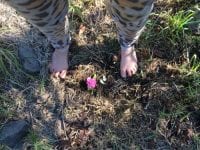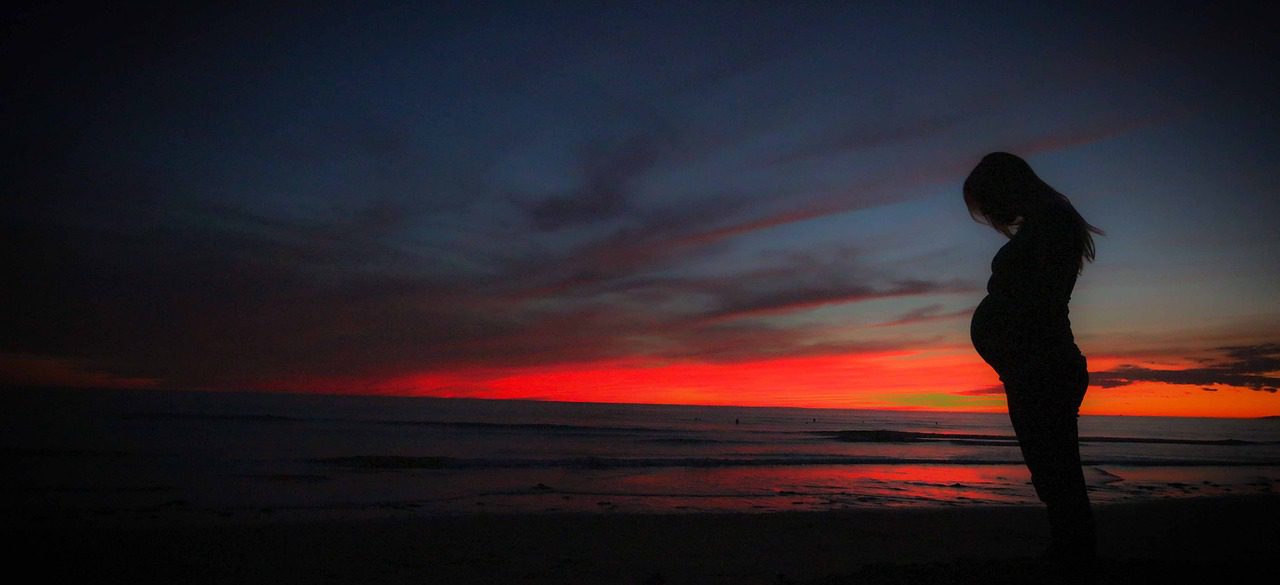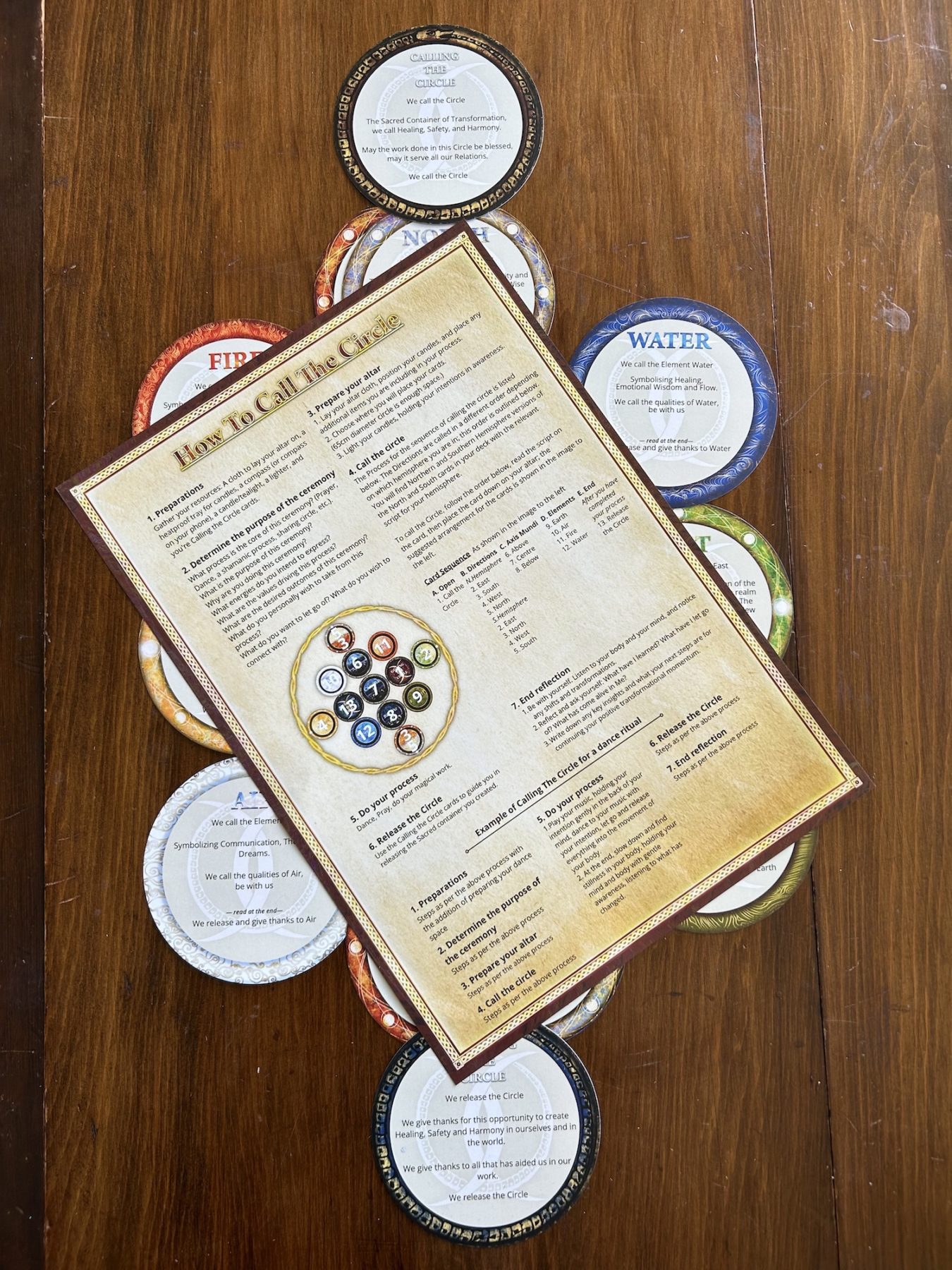HONORING RITES OF PASSAGE IN A WOMAN’S LIFE
The Four Phase Feminine Way
Spring 2013
When viewed as a whole, a Woman’s life is divided into 4 phases.
These phases or seasons are related to and defined by the expression of her fertility and sexuality.
Maiden – birth to childbirth
Mother – childbirth to menopause
Maga – menopause to retirement Crone – retirement to death
With each life season there is a rite of passage or initiation that marks the end of one season, and the be- ginning of the next. It is a time of transformation, the woman transforms from one way of being to another, never to return again to her previous life season. What happens during and around this transition, whether by conscious creation or by default, sets the theme for a woman’s experience of her self in her new role in her next life season.
The rites of passage of birth, menarche, childbirth and menopause serve the purpose of educating us of the value our culture places on our new role. They inform us of our culture’s expectations of us in our new role and give us information about how we are to behave. This pertains to the culture at large and the culture within the family and close community. This effect occurs whether we are paying attention to the details of the rite of passage or not.
The Seasons of Life
During the season of the Maiden there are two rites of passage. Her own birth, which begins her life and the Menarche, the initiation of menstruation. How a person is born, what happens during and around this time greatly influences their life ahead. The menarche transforms the Girl to a Woman, her fertility and sexuality become the rhythm of her life. This is the life season of Spring.
Childbirth heralds the entry to the next season – Mother, the Summer of a Woman’s life. Each time a woman gives birth is another rite of passage as she deepens her experience as Mother.
Menopause, the cessation of menstruation or “change of life” marks the beginning of the season of Maga, the Autumn of a Woman’s life. This is the life season that features the harvesting her life skills. Her focus shifts from her own family, as they grow up, to her community.
Retirement or withdrawal from the busy-ness of life marks the beginning of, the time of the Crone, the
Winter of a woman’s life.
So, what happens around the rite of passage event, how one is treated, what one is taught, consciously and unconsciously, introduces, instructs, even brainwashes the ‘initiate’ with the values and beliefs their culture holds about their new role and expected behaviour. This process gives the ‘initiate’ information on a deep level about their new role and the value they will have. This information then defines the mindset or beliefs of how the new phase will be lived out.
In most traditional cultures, cultures that our modern, tradition lacking cultures turn to in search of mean- ing and understanding, the rites of passage were enacted with the seriousness and reverence they deserve.
Initiation Into Womanhood
The way the menarche and menstruation are dealt with in our culture, our families and our communities, influences how a young woman understands what it “means” to be a Woman, a cyclical sexual fertile female human being.
In many traditional cultures in which Women were respected and honoured, the Menarche of a girl was celebrated with a ceremony of huge significance. The Apache Native Americans held ceremonies for days, with the whole tribe present, to celebrate girls entering their Womanhood.
In the Nootka tribe, after a party to honour her menarche, the young woman was taken far out to sea and left to swim back to the land. Once she had done this she was recognised by her community as a woman, strong and brave and ready for the responsibilities of womanhood – marriage and rearing children.I
In modern times, some families acknowledge the menarche with a gift for the young woman, a celebratory dinner, even a party. Sometimes this happens within a circle of women who welcome the newly fertile woman to their sisterhood. They share stories of their own experiences of menstruation and make wishes and blessings for the new woman’s future life.
Few of us were treated with celebration and honouring to welcome us to our next phase – Woman. At best it was ignored, at worst it was a source of shame and embarrassment.
Few of us were lead to believe that being a woman was wonderful.
Mostly, our rite of passage, our initiation to womanhood, told us not that that something really special had happened, but rather that we had entered a phase in our lives where we would be dictated to by something that we could not control (unless we took the magic pill), something that is an inconvenience and usually painful. The best we could do is plug ourselves up, pretend nothing is happening and just get on with it, and most of all don’t make a fuss. We were told we had entered the phase of our lives dominated by ‘the curse’ and then when we became sexually active we lived with the fear of pregnancy.
When women remember the details around their menarche they can often see the theme that was created, the theme that they were to live out as a woman. It’s like the opening scene in your story as a woman that develops as you do.
Initiation Into Motherhood
Childbirth is the next rite of passage in a Woman’s life, her initiation into Motherhood. The way the rite of passage of birth is managed dictates to a woman her role and value as a Mother in the culture. A culture’s attitude to and value of Mothers are reflected in the practices used for birth.
With the rite of passage of birth, the mother and the baby are both affected. Babies remember birth, this is well known by those who investigate this area. Babies imprint on everything that occurs during their time in the womb, their birth and beyond. Imprinting is the process by which humans and animals survive, we learn and file the reaction to stimuli and recall that to use as our learned behaviour the next time that stimulus occurs. So the baby learns from its mother by ‘observing’ her through her experiences during pregnancy and birth and up to seven years old. What the baby ‘observes’ of the mother becomes its own default reaction to the same and related stimuli.
Fortunately, giving birth is what we as women are designed to do. Birth is a normal natural body function in fact it is our primary biological purpose and our bodies are designed and equipped to perform this function. Like all normal bodily functions, it relies on good health, right attitude and a healthy safe environment, to occur without mishap or complication. Should complications arise they will be attributable to some underlying belief held about the body and its ability to function. It is important to remember that
bringing fearful thoughts to birth, as with all of life, will effect how the experience unfolds. Fears are simply controlling thoughts that we hold in our minds by choice, that we can let go of. Birth is a process that can be trusted. Pregnancy and Birth are a journey deeper into womanhood.
Every pregnancy results in a birth, whether that is a natural birth at full term, an emergency caesarean, a miscarriage or a termination. How a woman experiences this birth is what contributes to her ‘shape’ as a mother. If she has had a disempowering experience then she starts her mothering career from a compromised position. This doesn’t mean she can’t heal, she can, and the healing process becomes part of her journey of Motherhood. A natural birth can be a disempowering experience if the Mother and her family are not treated with respect; and a highly technical birth can be an empowering one, even a deeply healing experience.
However the birth occurs, it will be highly appropriate for that individual mother’s journey. The trick to seeing it like that is the knowing that due to our internal beliefs and attitudes we attract into our lives the experiences we need to learn from as we journey on in our lives toward wholeness. What may look like an unfortunate experience is merely the perfect next event in a person’s life to have them realise (or not if they choose) what they next need ‘to get’. I like the commonly used analogy of peeling an onion. The journey
of life involves peeling back each layer one at a time to reveal the next, no layer can be avoided and each one leads to the next. In this process we come to know ourselves more fully learning the lessons of our life’s quest.
Honouring Menopause
Traditionally, Menopause, the cessation of menstruation was the rite of passage from Mother to Crone. However, we now live longer than our ancestors. In the time of the ancient Triple Goddess – Maiden, Mother, Crone – we had babies at 14, were grandmothers at 30 and dead at 45. Many women died even before reaching menopause. Now if we are well, we can live to 100 plus years. The ancient Triple Goddess – Maiden, Mother Crone – can now be extended to the Four Phase Feminine Way – Maiden, Mother, Maga, Crone – including the forth season of autumn, Maga, between Mother and Crone.
So menopause is the rite of passage from Mother to Maga, the autumn season of our life. Today menopause is treated as a hormonal imbalance, corrected my the medical profession with drugs, that so often prove to be very dangerous after enough women take them for long enough to see the effects! The peri-menopause is the period of time from the first changes in a woman’s cycle to when she finishes bleeding all together. She is said to be post-menopausal when she has finished bleeding for 2 years.
The peri-menopause may take up to thirteen years, it may take one. Dr Christiane Northrup says the peri-menopause is another labour which results in the woman giving birth to a new self. The severity of
the symptoms within a woman’s peri-menopause are related to the severity with which she experienced the premenstrual part of her menstrual cycle. Both of which are often wake-up calls for a woman to notice the detrimental effects of toxins on her health. Toxins such as stressful lifestyles, dysfunctional relationships and an unhealthy diet.
Peri-menopause takes as long as it takes, and mostly the woman needs support from her family and friends that what she’s going through is normal. As her hormonal balance shifts she experiences all manner of symptoms and it is her time to read the messages her body is giving her to fulfil her physical, emotional and spiritual needs. If she doesn’t, the symptoms just get louder and bigger.
Our culture wants to eradicate peri-menopause with hormone replacement therapy, its seen as a dangerous set of symptoms to avoid. What message does this give peri-menopausal women? Maybe something like at your age ‘you are not valued,’ ‘better avoided,’ or even done away with altogether. You can see these attitudes reflected in the amount of plastic surgery used and promoted to prolong youthful looks.
The peri-menopausal time of a woman’s life is probably also ‘complicated’ with her teenagers special needs and her ageing parents reaching their needy time as well. So, peri-menopausal women need all the sup- port and encouragement possible. They need to know that they are highly capable and hugely resourceful women otherwise if they didn’t realise that, they would probably need lots of prescription drugs to numb themselves.
Peri-menopausal women may have grown up children and be grandmothers or they may have younger children, or both.
Honouring Cronehood
And then there’s the rite of passage of retirement marking the transition from Maga to Crone. Where’s the ‘gold watch’ for our old grandmothers when they decide they want to stay home?
Cronehood is not valued in the same way in our modern culture as it was in traditional cultures. Not too long ago, the Crones were respected and valued. In some traditional Native American cultures it was the Crones that chose the Chiefs and the Crones that gave the final say on whether to go to war or not.
Our culture is ‘age-ist’ and our wise women can often be found sequestered into ‘old people’s homes’. Why aren’t they sitting with the children and telling them their stories?
This is an excerpt from my forthcoming book “Honouring and Celebrating the Rites of Passage in a Woman’s Life”.
It will include women’s stories and ceremonies to use for the rites of passage. Let me know if you want a copy when its available.
(I) “Her Blood Is Gold” by Lara Owen
Recent Posts
MINMIA BLOG SERIES 1
DOWNLOAD PDF VERSION MINMIA BLOG SERIES 1 I was “sent for” (her words) by Minmia, Aboriginal Elder Woman, Wirradjirri, Law-woman, Wirrloo (a powerful [...]
MINMIA BLOG SERIES 2: GETTING THE BIRTH CEREMONY RIGHT
DOWNLOAD PDF VERSION MINMIA BLOG SERIES 2: GETTING THE BIRTH CEREMONY RIGHT Minmia Blog Series 2 This blog is primarily about the Indigenous [...]
MINMIA BLOG SERIES 2 (CONT): SOME REBIRTHING CEREMONY STORIES
DOWNLOAD PDF VERSION MINMIA BLOG SERIES 2 (CONT): SOME REBIRTHING CEREMONY STORIES Jane’s Rebirthing Ceremony Story... I am one whose placenta was probably [...]
MINMIA BLOG SERIES 2 (CONT): ON PLACENTA
DOWNLOAD PDF VERSION MINMIA BLOG SERIES 2 (CONT): ON PLACENTA There’s a lot to be said about placentas, ‘mother cakes’, ‘Tree of Life’, [...]
SPRING EQUINOX, OSTARA: SOUTHERN HEMISPHERE
DOWNLOAD PDF VERSION SPRING EQUINOX, OSTARA: SOUTHERN HEMISPHERE Spring Equinox: September 23 Midway through Spring! This is the time of equal day and [...]
BELTANE: SOUTHERN HEMISPHERE
DOWNLOAD PDF VERSION BELTANE: SOUTHERN HEMISPHERE Southern Hemisphere Beltane The date for the Southern Hemispheric Beltane is October 31st and ‘May Day’ is [...]
Visit the Shop




















